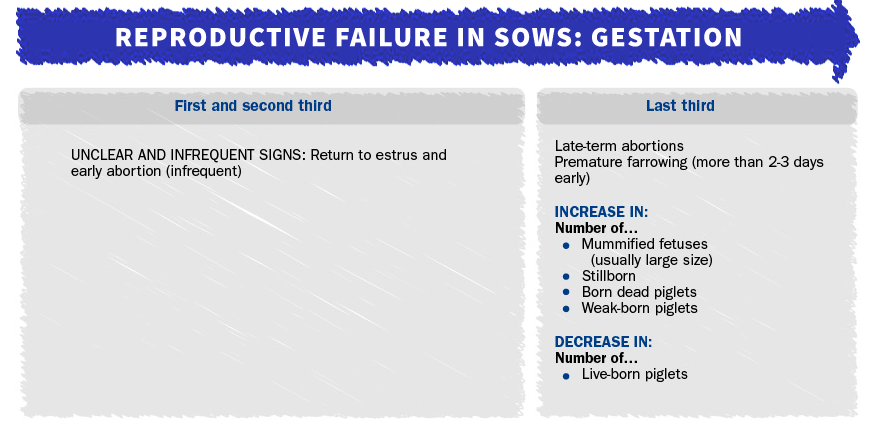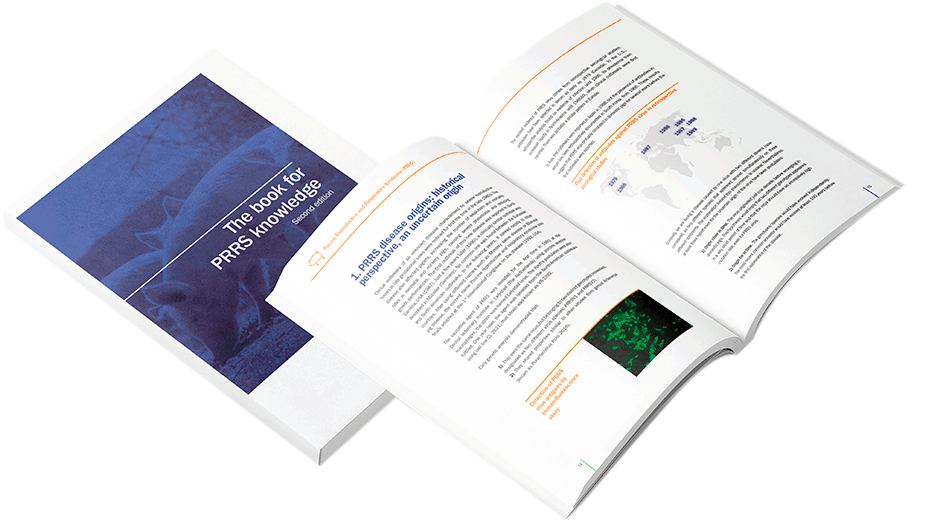Is the PRRSv infection reducing the growth performance of pigs? If so, what is the mechanism of growth retardation due to PRRSv infection? Should we make PRRS negative farm for better productivity compared to PRRS stable status?
First, I regarded this question to be very easy to answer, but when I started, I realized the opposite especially if the answer should be based on scientific evidence.
The negative impact of PRRSV is clearly documented in a range of studies when dealing with acute outbreaks of PRRSV and also in “unstable” herds where the virus may circulate among sows and pre-weaned pigs resulting in reproductive problems and increased pre-weaning disease morbidity and mortality.
In some production systems, however, with a stable, seropositive sow herd that wean PRRS virus free piglets, there are still PRRS virus circulating in the nursery and even among the finishers.
The impact of PRRSV on productivity and health in the latter situation has not been investigated to the same extent as the acute outbreaks, and therefore it is difficult to give an evidence-based clear answer.
Pigs that are infected after weaning may develop respiratory clinical signs due to the direct viral damage of mainly the lungs and this may lead to disease and impaired productivity, including retarded growth.
In many herds, however, the pigs do not show any overt clinical signs directly related to the PRRSV infection, but the virus still replicate and may be transmitted to other pigs. The latter situation is referred to as “subclinical PRRSV infections”.
The million dollar question is if these “subclinical” infections lead to impaired health and productivity due to the negative impact of PRRSV on the immune system that may pave the way for other pathogens.
The impact of coinfections on respiratory diseases was recently reviewed in an excellent paper in Veterinary Research [1]. This paper reviewed all available experimental data on the interaction of e.g. PRRSV and other porcine pathogens and failed to identify a clear relationship between PRRSV and other infections, but also underlined that it is very difficult to mirror the field situation in controlled experimental conditions.
It is my perception, that subclinical PRRSV infections in some herds have very little impact on the pigs, whereas in other herds, PRRSV has a significant negative effect due to interaction with other pathogens, including other porcine viruses and bacteria.
The impact of PRRSV in a given herd depends on the combined effect of a wide range of factors including management, pig flow and structure (continuously or AI/AO), housing and environmental conditions, herd size, pig breed, PRRSV strain and load, and the presence and load of other pathogens.
In addition, the impact of PRRSV in a given herd may change over time and especially in the case of introductions of new pathogens because it is our experience that new infections hits much harder in PRRSV positive herds compared to PRRSV negative herds. Again, this statement has admittedly not been clearly documented in controlled studies.
In conclusion, then it is my clear perception that PRRSV have a pronounced negative impact on the productivity of pig herds globally and I am convinced that PRRSV negative herds overall have a better performance that PRRSV positive herds.
The challenge for you as herd advisor is that some PRRSV positive herds do not experience a significant negative impact of PRRSV and therefore will not benefit from a costly elimination plan.
[1]. Saade, G.; Deblanc, C.; Bougon, J.; Marois-Créhan, C.; Fablet, C.; Auray, G.; Belloc, C.; Leblanc-Maridor, M.; Gagnon, C.A.; Zhu, J.; et al. Coinfections and their molecular consequences in the porcine respiratory tract. Vet. Res. 2020, 51, doi:10.1186/S13567-020-00807-8
If you want to know more about the impact of PRRSV read out chapters: “Pathogenesis, Lesions and Clinical Disease” and “Economic impact in swine industry”
You can ask your own question! Visit Pig333.com and submit your question to the experts.

National Veterinary Institute of Denmark





